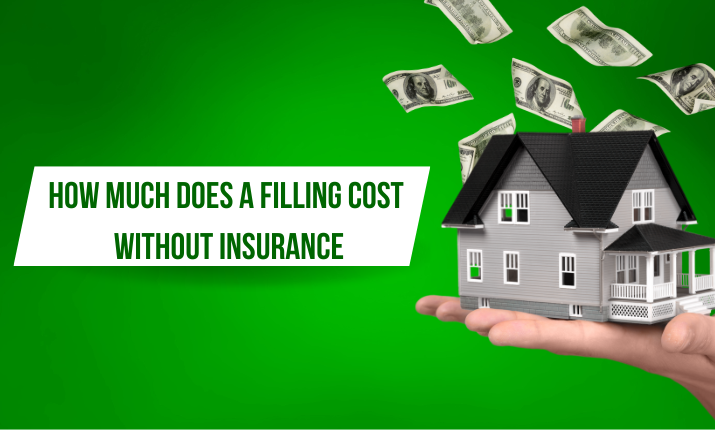Introduction
Dental health is integral to overall well-being, yet many individuals lack dental insurance coverage for filling procedures. This often raises questions regarding filling costs. We will examine in this article all of the factors that influence this price when no insurance plan is in play.
Understanding the Importance of Dental Fillings
Dental fillings are an indispensable treatment option for treating cavities and halting further tooth decay. They restore function to damaged teeth for a healthier, pain-free smile.
Factors Affecting the Cost of Fillings
The price of a filling can depend heavily on the material used – common options being amalgam (silver), composite resin (tooth-colored), gold, and porcelain fillings, each carrying its price point.
Location and Dental Practice
A dental practice’s location can have an enormous effect on its costs of fillings; urban areas tend to have higher overhead expenses reflected in procedure pricing.
Cavity Complexity
The size and complexity of a cavity play an essential part in determining its cost to fill; larger or more intricate holes often require extra materials and labor, leading to higher prices overall.
Dentist Experience and Reputation
Experienced dentists may command higher fees for their expertise. Their skill and precision contribute greatly to the overall success of a filling costs procedure.
Additional Procedures Needed
A filling may be part of an extensive treatment plan involving root canal therapy or crowns – increasing overall costs.
Community Health Clinics
Many communities provide health clinics that offer dental services on a sliding scale basis, depending on income; such clinics provide high-quality dental care at lower costs – an attractive option for those without coverage or insurance.
Dental Schools and Teaching Clinics
Dental schools may feature clinics where dental students provide treatment at reduced costs. Though treatment may take longer due to learning processes, it can offer cost-effective fillings or basic procedures like root canal therapy.
Seeking Non-Profit Organizations and Charities
When looking for non-profit dental organizations, it can greatly help by operating mobile clinics or partnering with local dentists. Hence, they offer these services for free or at reduced prices compared to traditional pricing models.
Charitable Events and Mission Trips
Some organizations and dental professionals organize charitable events and mission trips to provide dental care services in underserved communities, often giving free fillings or other basic procedures at these events.
Investigating Dental Discount Plans
Dental savings plans
Dental savings plans are membership-based programs offering discounted prices on various dental procedures, such as fillings. While not insurance, these plans can significantly decrease out-of-pocket expenses.
Negotiating Payment Plans
Most dentists are happy to offer payment plans tailored specifically to your situation. Treatment costs can become more manageable by discussing them in advance and considering different payment methods.
Average Costs of Fillings
Amalgam (Silver) Filling Costs On average
Amalgam fillings are more cost-effective, typically costing $50-150 per filling, and are often chosen due to their durability and longevity.
Composite Resin (Tooth-Colored) Fillings
Composite resin fillings cost between $90 and $250 per filling and provide a natural look by blending into the tooth itself.
Gold and Porcelain Filling costs
These premium options carry higher costs, ranging from $250 to $4,500. Though more costly, they provide unrivaled durability and aesthetics.
Understanding the factors affecting the filling costs is vitally important for those without dental insurance coverage; consider factors like material, location, and complexity of cavities to make educated decisions regarding your dental health.
For those exploring their options more thoroughly, consulting a renowned dentist is key for getting accurate prices and personalized suggestions.
1. Can I negotiate the filling costs with my dentist?
While some dental practitioners may offer flexible pricing plans and materials options that could bring costs down further, quality dental care should always be treated as an investment in your health. Therefore, options like payment plans or alternative materials should always be explored before filling costs.
2. Are There Alternative Solutions to Fillings?
For early-stage cavities, other forms of treatment, such as fluoride treatments and dental sealants, may provide relief; it is wise to consult with your dentist to determine the most effective course of action.
3. Are there any government programs that can assist with dental care?
Yes, government programs like Medicaid provide limited dental coverage to eligible individuals. Community clinics and non-profit organizations may offer discounted or free dental care services.
4. How can I maintain good oral health on a budget?
Regular brushing, flossing, and use of fluoride products are vital to avoid cavities. Furthermore, scheduling regular dental check-ups could allow dentists to identify problems early and potentially reduce costly treatments that would otherwise need to be undertaken later.
5. Where can I find affordable dental care options near me?
Community health clinics, dental schools, and non-profit organizations typically provide low-cost or sliding-scale fee services. Researching local dental providers and discussing payment plans with them may also help find you affordable solutions that match your budget needs.

